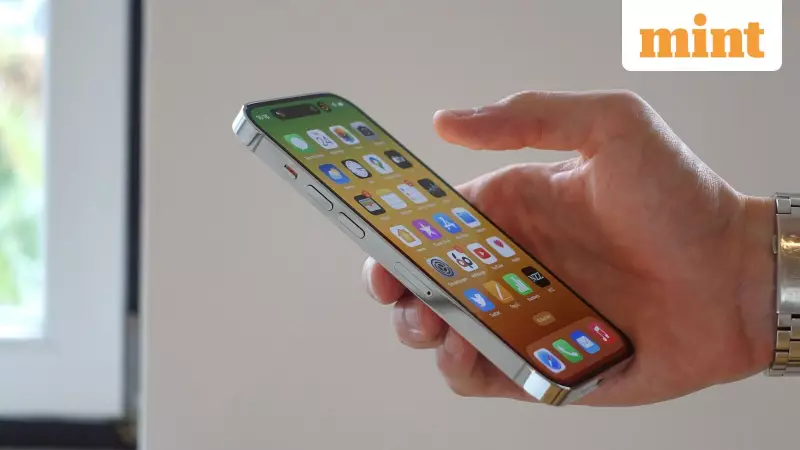
Apple's Design Revolution: Back to Basics with iPhone 17
In a significant shift that harks back to the Steve Jobs era, Apple Inc. is fundamentally rethinking how it designs and builds iPhones, placing unprecedented emphasis on proprietary materials and enhanced repairability. Richard Dinh, Apple's vice-president and head of iPhone product design, revealed in an exclusive interview with Mint that the company's engineering approach for iPhone 17 marks a return to core principles that made Apple products legendary.
The world's second-most valuable company has dramatically increased its global R&D spending to develop custom materials specifically for iPhone design and customer experience. This strategic move prioritizes product engineering over supply chain cost reduction, signaling a fundamental shift in Apple's design philosophy.
Materials First: Engineering Excellence Over Cost Cutting
Dinh emphasized that material selection drives Apple's design process rather than supply chain considerations. "With material selection, more than the supply chain, it always starts with what the right material is to enable a specific iPhone design and the customer experience we're looking to deliver," Dinh explained. "We develop the product around the idea that we have, the best material library that we have, and the best materials that we can custom-design."
The aluminum used in this year's iPhone comes from Apple's proprietary materials library, combined with specific manufacturing styles like forging a unibody design for enhanced performance. This approach reflects the precision engineering culture that Steve Jobs instilled at Apple, which continues to drive the company's product development.
Apple's commitment to materials innovation includes several groundbreaking technologies:
- Custom micro-structures for heat control through single-degree temperature control during manufacturing
- Atomic-level ceramic bonding with silicon oxynitrite ceramic coating
- 100% recycled components in custom-designed vapour chambers
- Proprietary titanium 3D printing for manufacturing optimization
R&D Investment and Market Performance
Apple's intensified focus on research and development comes as iPhone sales generated $209.6 billion, representing half of Apple's $416 billion annual revenue and 68% of its products revenue. The company's R&D spending grew at over 10% year-on-year to $34.6 billion, accounting for over 8% of the company's top line and outpacing revenue expansion of 6.4%.
Tarun Pathak, partner and research director at Counterpoint Research, noted that this materials-focused approach "is typical of the kind of focus that Apple has always had on product engineering." He added, "If you go all the way back to the Steve Jobs era, Apple has always been known for precision engineering and the perceived halo that has helped Apple find India as a major market."
Enhanced Repairability and Sustainability
In a major win for consumers, Apple is doubling down on repairability with the iPhone 17. Dinh revealed that the company has used R&D to significantly improve ease of repair, including innovations like static-charged adhesive for battery removal and screw-based thermal architecture that simplifies component replacement.
"We've used R&D to really improve ease of repair, with innovations such as the ability to remove the iPhone battery simply by static-charged adhesive," Dinh said. "This reduces chances of damage and improves repairability further without going through a complicated procedure."
The company now designs products specifically for repairability and long life cycles, with material choices aimed at ensuring iPhones can be durable enough to be passed down within families. Will True, iPhone product manager at Apple, added that the company has set ambitious sustainability goals for its global manufacturing and supply chain vendors, including increasing recycled materials and transitioning to renewable energy in factories worldwide.
India's Growing Importance in Apple's Strategy
India continues to emerge as a critical market for Apple's global operations. CEO Tim Cook recently announced a 14th straight quarter of record revenue from India, with the company eyeing a seventh consecutive year of double-digit growth in sales. Apple is estimated to sell 15 million iPhones in India this year.
The company is rapidly expanding both retail and manufacturing presence in India. Apple now operates four owned physical retail outlets with two more expected to open in coming months. Manufacturing operations are also scaling up significantly, with iPhone exports from India nearing 24 million units in the first six months of this fiscal year, crossing $10 billion in export value.
Francisco Jeromino, vice-president at IDC, attributed Apple's growth to its "best results ever in a June quarter" and iPhone 17 preorders surpassing previous generations. Globally, Apple accounted for 18% of all smartphones sold in the September quarter, maintaining its position as a market leader despite increasing competition.
As Apple continues to innovate in materials science and repairability while expanding its global footprint, the company's return to Jobs-era engineering principles appears to be paying dividends across both product quality and financial performance.





